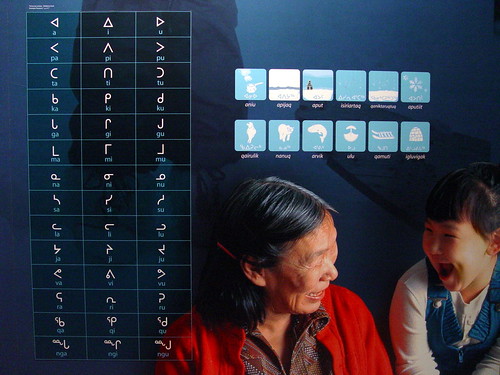This is a heart-warming success story and a tribute to the collaborative and open culture on the net that so seldom gets media coverage. It also highlights the potential of crowd-sourced translation to bring literature from developing countries to a global audience. Very few, if any, commercial publishers will risk commissioning English translations of works from, say, Burkino Faso, Kazakhstan or Laos but groups of students, teachers or writers could share the task and produce open e-books, not for commercial gain but as showcase for the country's writers. It's a similar model to sites like Jamendo that offer free music with Creative Commons licenses that can be downloaded and reused. The musicians make no money from this but can gain global reputation and recognition that may result in commercial opportunities later on. Time for an open literature movement to promote world literature?
Another difficulty in reading around the world is that the vast majority of world languages are not even on the net yet according to an article in The Atlantic, The Internet Isn't Available in Most Languages.
At the moment, the Internet only has webpages in about five percent of the world's languages. Even national languages like Hindi and Swahili are used on only .01 percent of the 10 million most popular websites. The majority of the world’s languages lack an online presence that is actually useful.
So even if the infrastructure and technology are available there is simply very little to read there for millions of people. The popular social media lack instructions and templates in most languages making them impossible to use. We need to find innovative strategies to widen the linguistic range of the internet and ensure that there is relevant content for all. The notion that open educational resources, MOOCs and so on can make education accessible for all will not happen until those resources are available in many more languages than today. The lack of linguistic diversity on the net deserves more attention and we need to find ways to stimulate the development of digital content in all languages. A lot can be done by volunteer grassroots initiatives, providing free open platforms, training and support, but more stimulus, especially financial, is required from national and international organisations.
So even if the infrastructure and technology are available there is simply very little to read there for millions of people. The popular social media lack instructions and templates in most languages making them impossible to use. We need to find innovative strategies to widen the linguistic range of the internet and ensure that there is relevant content for all. The notion that open educational resources, MOOCs and so on can make education accessible for all will not happen until those resources are available in many more languages than today. The lack of linguistic diversity on the net deserves more attention and we need to find ways to stimulate the development of digital content in all languages. A lot can be done by volunteer grassroots initiatives, providing free open platforms, training and support, but more stimulus, especially financial, is required from national and international organisations.

No comments:
Post a Comment
Note: Only a member of this blog may post a comment.